Forest Information Billboard
Issue 4, December 2017

SAVE THE DATE
23 - 24 January 2018: Brainstorming Workshop for the next ECE/FAO Forest Sector Outlook Study, Room IX, Palais des Nations, Geneva, Switzerland, http://www.unece.org/index.php?id=47489
13 - 14 February 2018: Workshop on the Mid-Term Review of the Rovaniemi Action Plan for the Forest Sector in a Green Economy, Room IX, Palais des Nations, Geneva, Switzerland, http://www.unece.org/index.php?id=47491
20 - 23 February 2018: Criteria and Indicators for Sustainable Forest Management in the Caucasus and Central Asia and ToS on SFM Monitoring Meeting, Tbilisi, Georgia, http://www.unece.org/index.php?id=46408
21 March 2018: International Day of Forests - Forests and Sustainable Cities, Geneva, Switzerland, http://www.unece.org/index.php?id=46328
22 - 23 March 2018: 40th Session of the Joint ECE/FAO Working Party on Forest Statistics, Economics and Management, Geneva, Switzerland, http://www.unece.org/index.php?id=46334
21-22 June 2018: Ministerial Conference - Forest Landscape Restoration and the Bonn Challenge in the Caucasus and Central Asia, Astana, Kazakhstan, https://www.unece.org/index.php?id=47712
5-9 November 2018: 76th Session of the ECE Committee on Forests and the Forest Industry, Vancouver, Canada, http://www.unece.org/index.php?id=47708
For more details about upcoming events, please refer to the meeting website or the "Events" section at the bottom of the Billboard.
Forest reporting
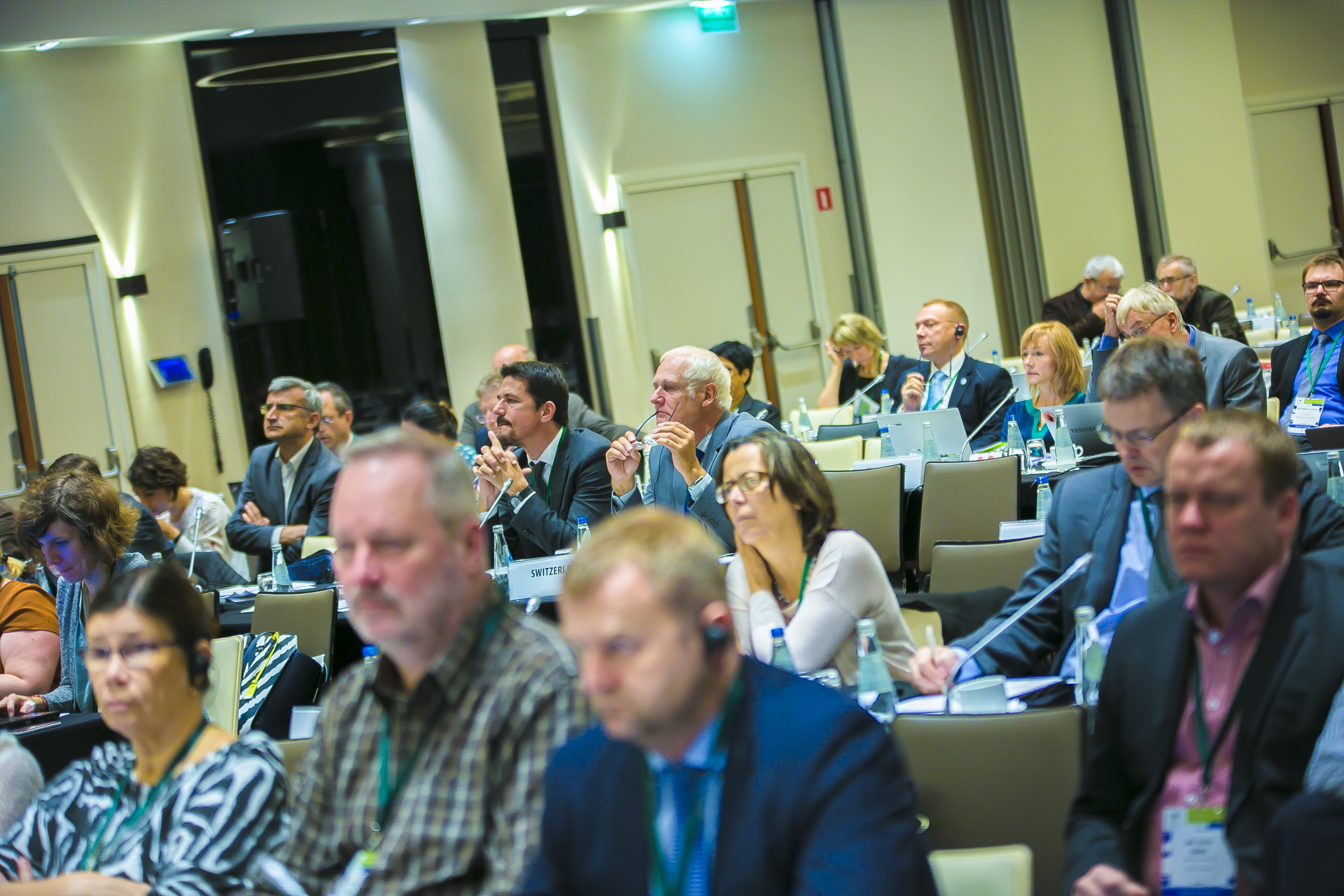 Countries ensure that their forests are sustainably managed and used for the well-being of all and promote long lasting, sustainably sourced wood products that can make important contributions to climate mitigation.
Countries ensure that their forests are sustainably managed and used for the well-being of all and promote long lasting, sustainably sourced wood products that can make important contributions to climate mitigation.Ministers encouraged the use of forests and wood to support sustainable development at Las2017, the Joint Session of the UNECE Committee of Forestry and Forest Industry and the FAO European Forestry Commission, which took place in Warsaw, Poland, from 9-13 October 2017. After a week of intensive negotiations, countries set robust goals to enhance sustainable forest management throughout the region in the next years and adopted the Warsaw Integrated Programme of Work (2018-2021).
The Warsaw Programme covers over 43% of the world’s forests, including almost 100% of the worlds’ boreal forests and the vast majority of temperate ones. The programme will be implemented in North America, Europe, Central Asia and the Russian Federation, which together account for 60% of global industrial round wood production and related forest products.
Prof. Szyszko, Minister of Environment of Poland, said “Forests play an essential role in sustainable development. We are proud that Poland hosted this meeting which adopted the Warsaw Integrated Programme of Work. The document is a blueprint for our forests in the coming years and an important contribution to the Global Forest Goals, the Sustainable Development Goals and the Paris Agreement”.
[IISD reporting] [Las2017 Website and Documents] [Press Release]
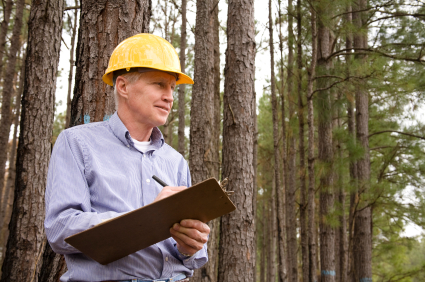 The 2030 Agenda for Sustainable Development provides a major policy framework for countries at all levels of development. However, the ability of an economy to cope with shifting towards sustainability will depend on its capacity to put in place policies supporting green economy.
The 2030 Agenda for Sustainable Development provides a major policy framework for countries at all levels of development. However, the ability of an economy to cope with shifting towards sustainability will depend on its capacity to put in place policies supporting green economy.The impact of green economy transition on workers will vary depending on the economic sector and the country in question. Green economy investments in creating green goods and services will generate new job opportunities, however in some cases the transition may result in both the loss of jobs and the creation of new jobs. In most cases, though, rather than replacing existing jobs with entirely new green jobs, it is the way in which the work is performed that will change.
In relation to that, the term “green jobs” refers not only to new jobs emerging from green economy but also to existing ones, provided some specific conditions are met. These conditions were captures in various definitions of green jobs, developed over the past several years.
According to the International Labour Organization, jobs are green “when they help reduce negative environmental impact, ultimately leading to environmentally, economically and socially sustainable enterprises and economies. More precisely, green jobs are decent jobs that improve, among other things, energy and raw materials efficiency, limit greenhouse gas emissions, minimize waste and pollution, protect and restore ecosystems, and support adaptation to the effects of climate” (ILO, 2015a; see also ILO and Cedefop, 2011). Read more.
***
This study “Green Jobs in the Forest Sector” will be published soon on the ECE/FAO website.
This article is the second article in the series "Focus on Green Jobs". The first article can be found here.
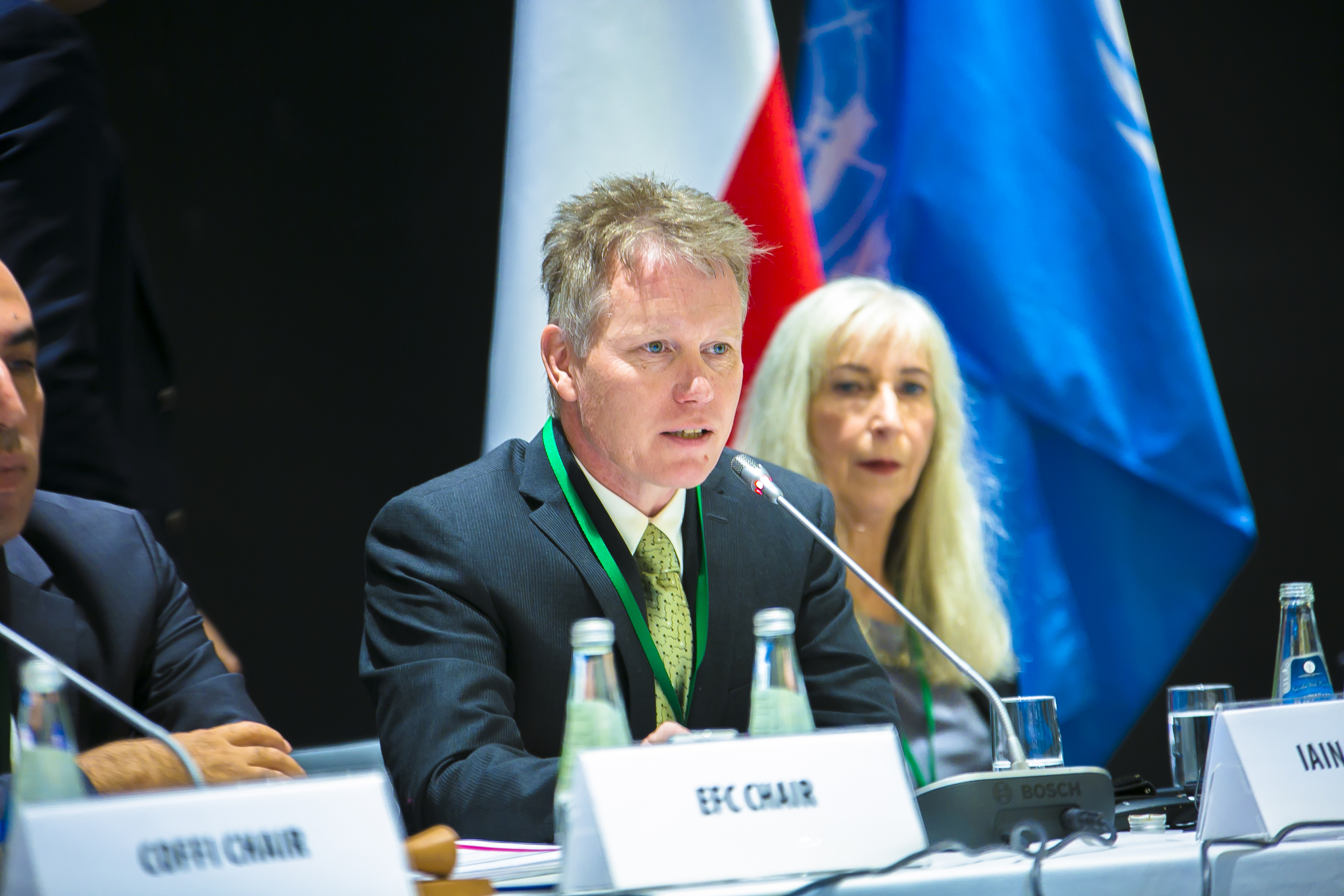 Forest products markets are doing well, with improvements forecasted to continue into next year although barriers to cross-border trade are an ongoing concern for the forest products industry, according to the market statement at Las2017, the Joint Session of the Committee of Forests and the Forest Industry of the UN Economic Commission for Europe and the European Forestry Commission of the Food and Agriculture Organization of the UN.
Forest products markets are doing well, with improvements forecasted to continue into next year although barriers to cross-border trade are an ongoing concern for the forest products industry, according to the market statement at Las2017, the Joint Session of the Committee of Forests and the Forest Industry of the UN Economic Commission for Europe and the European Forestry Commission of the Food and Agriculture Organization of the UN.The Market Discussion at Las2017, included expert presentations and focused on current forest products trends. During the discussion, there was an emphasis on the importance of forests and wood products to mitigate climate change and, more broadly, on providing products that meet society’s desire to live sustainably. Wooden buildings have great potential for storing carbon as well as reducing carbon emissions over the entire life-cycle of the structure. Iain Macdonald, an expert on tall wooden buildings, pointed out that wood has significant advantages over concrete and steel, “it takes five times more energy to produce a tonne of concrete and twenty-four times more energy to produce a tonne of steel, as compared to a tonne of wood.”
The Committee and the Commission forecasts that in the ECE region:
- removals of industrial roundwood will increase at an annual rate of 1.7% in 2017 and 0.8% in 2018
- the production of sawn softwood will increase at an annual rate of 2.2% in 2017 and 0.6% in 2018
- the production of sawn hardwood will decline at an annual rate of 0.3% in 2017 and then rise slightly by 0.6% in 2018
- the production of wood-based panels will increase at an annual rate of 0.9% in 2017 and by 1.3% in 2018
- the production of paper and board will increase at an annual rate of 0.8% in 2017 and decline by -0.4% in 2018
- the production of wood pellets will increase at an annual rate of 9.8% in 2017 and 4.7% in 2018
To read more, please see the
Forecast tables with product and country level forecasts for 2017-2018 - http://www.unece.org/forests/fpm/timbercommittee.html
Market Statement - http://www.unece.org/DAM/timber/statsdata/market-statement-coffi75-12-october-2017.pdf
Individual Country Statements (20) - http://www.unece.org/forests/market-statements-2017.html
Presentations - http://www.unece.org/forests/las2017
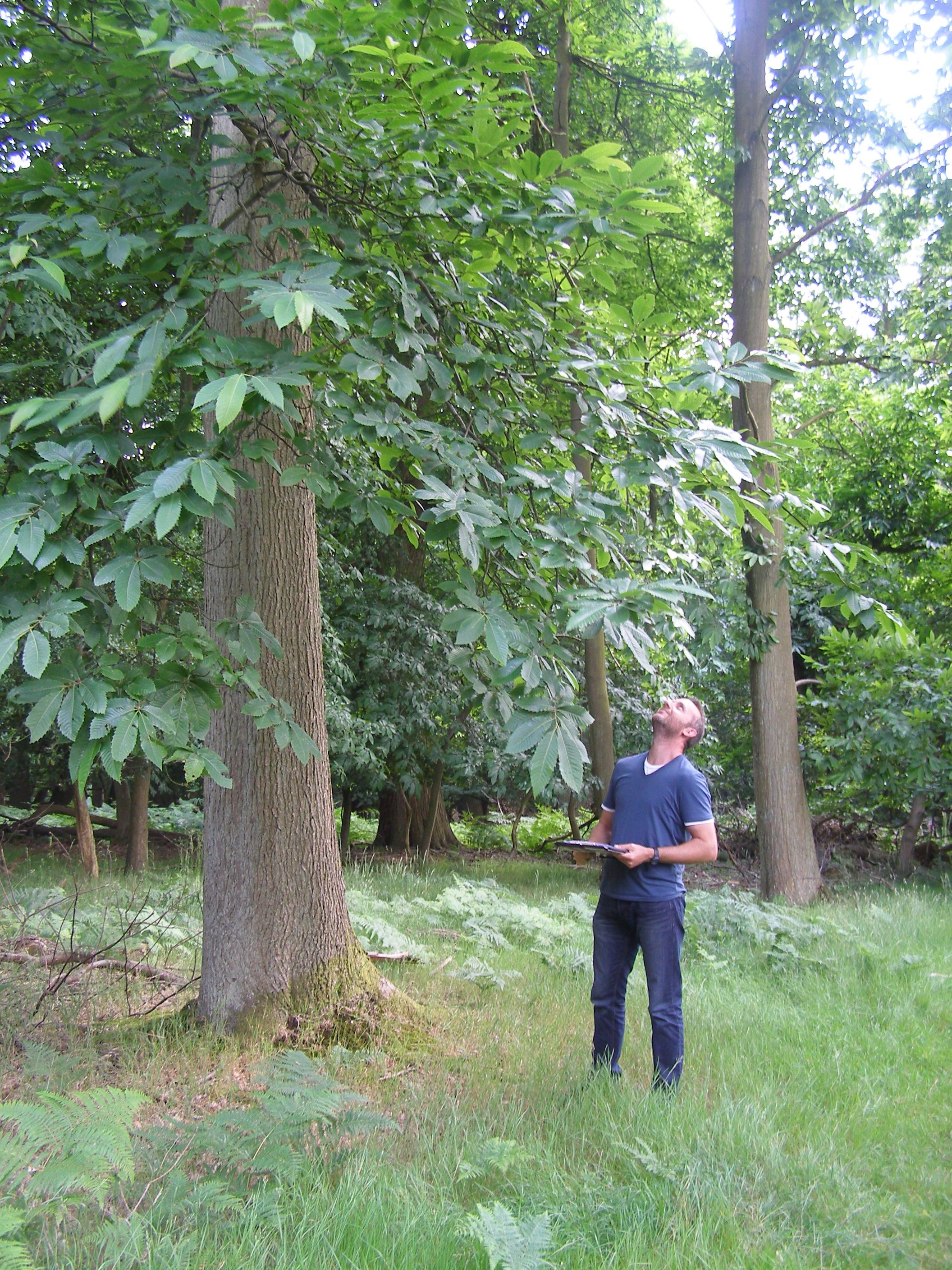 An award-winning partnership which has identified 1,046 cases of tree pest and disease across the UK is set to continue.
An award-winning partnership which has identified 1,046 cases of tree pest and disease across the UK is set to continue.Observatree launched in spring 2015 aiming to train volunteers to help protect the UK’s trees, woods and forests from harmful pests and diseases, both existing and new.
So far, 235 volunteers have been trained by the collaboration led by Forest Research, supported by the Woodland Trust, Forestry Commission England, Defra, Fera Science Ltd, the Animal & Plant Health Agency, the National Trust, Natural Resources Wales and Forestry Commission Scotland.
Over 3,000 sites have been surveyed by the volunteers in a little over two years with over 600 ‘priority’ pest or disease cases being confirmed. As part of this, 11 of the 21 priority pests and diseases already in the UK have been recorded.
A small group of the volunteers also verify cases of tree disease recorded via the Forestry Commission’s Tree Alert, an online reporting tool which allows anyone to report trees showing signs of ill-health. The project will now continue with funding of £231,000 per year, and additional support, from a wide range of conservation and government bodies.
Chief Plant Health Officer, Professor Nicola Spence, said: “Protecting our trees from the threat of pests and diseases is vitally important to us all, and this project is an excellent example of volunteers, NGOs and government working together to achieve more than we could alone.
For more information visit www.observatree.org.uk

Forests are one of the most valuable natural resources in Georgia. They cover about 40% of the country and have significant potential for production of wood and wood products. About 98% of Georgian forests are natural forests, which are crucial for the country’s biodiversity, providing important ecosystem services and hosting unique species. Georgia is among the world’s 34 biodiversity hotspots, with more than 20% of its forests protected. However, numerous studies stress that weak forest governance combined with unchecked and undocumented activities are causing forest degradation.
To ensure the sustainable management of forests, a proper monitoring system is essential. Since 2003, Georgia has been a signatory country to the Ministerial Conference on the Protection of Forests in Europe (known as Forest Europe), which together with the European Union, develops common strategies for its 46 member countries on how to protect and sustainably manage forests. Nevertheless, so far, Georgia has not developed a national reporting system to account for sustainable forest management. Georgia is now progressing towards such a national forest reporting system via a participatory process for the development of a national criteria and indicator set for sustainable forest management.
This process is supported through the project “Accountability Systems for Sustainable Forest Management in the Caucasus and Central Asia”, undertaken by UNECE and the United Nations Food and Agricultural Organisation (FAO), in cooperation with the Ministry of Environment and Natural Resources Protecting of Georgia and the German Corporation for International Cooperation (GIZ). The project aims to strengthen national forest sectors by facilitating a participatory, multi-stakeholder process to develop accountability systems with the participation of international and national experts.
A national workshop organized by UNECE/FAO (29 November - 1 December 2017 in Tbilisi) focused on establishing a criteria and indicator set for sustainable forest management, bringing Georgia one step closer to achieving its national forestry goals, as well as the commitments under Forest Europe and the 2030 Agenda for Sustainable Development.
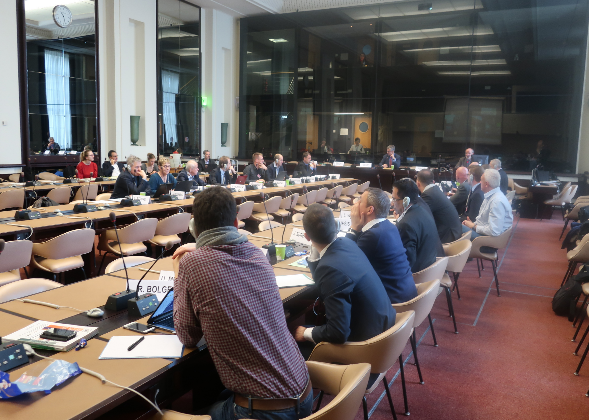 On 5-6 December 2017, the ECE/FAO Forestry and Timber Section organized a National Wood Resource and Product Balances workshop. During the workshop, national correspondents were brought together to review tools for analysing the comprehensiveness of reported data.
On 5-6 December 2017, the ECE/FAO Forestry and Timber Section organized a National Wood Resource and Product Balances workshop. During the workshop, national correspondents were brought together to review tools for analysing the comprehensiveness of reported data. The first day of the workshop was dedicated to discussion on inconsistencies in reporting for forest products. The ECE/FAO secretariat presented the wood fibre balance tool, which was based on data provided for the Joint Forest Sector Questionnaire (JFSQ). Participants discussed the usefulness of and improvements to the balance tool, conversion factors, ways of improving the match between availability and demand together with means for improvement in countries.
The second day of the workshop focused on forest balances. The ECE/FAO secretariat presented the forest balance tool and the comparison between removals and fellings in the region. National reports were used as a source for the calculation of values for participating countries.
Professor Andrey Filipchuk presented an overview of the forest balance in the Russian Federation and tools to improve the reporting, applied by the country. Professor Udo Mantau introduced the Inventory To Consumer (ITOC) biomass availability model, which was developed as an advanced tool to analyse national biomass balances.
In light of these discussions and feedback, work on the further development of balance tools will be continued. For more information about the workshop please visit the meeting website: https://www.unece.org/index.php?id=47616
 On 29th of August 2017 European Forest Institute (EFI) welcomed participants from its member organizations and further collaborators from science, policy and society to the official inauguration of EFI’s new Bonn office. Inspiring speeches from the local hosts and representatives of Ministries from EFI's host countries Finland, Spain and France were followed by a keynote from Christian Schmidt, German Federal Minister for Food and Agriculture, who emphasized the importance to make forests more resilient in the face of climate change, increasing forest fires, storms and other challenges. Participants watched as an oak tree was then planted in the symbolic opening ceremony outside the future EFI premises at United Nations Square. Afterwards, leading scientists from INRA, University of Freiburg, Lund University, KU Leuven and EFI presented their perspectives on forest resilience. Finally, Sonya Diehn, Head of the Environment team from Deutsche Welle, gave an insightful speech on what is relevant in the discussions about forest resilience from a journalist’s point of view.
On 29th of August 2017 European Forest Institute (EFI) welcomed participants from its member organizations and further collaborators from science, policy and society to the official inauguration of EFI’s new Bonn office. Inspiring speeches from the local hosts and representatives of Ministries from EFI's host countries Finland, Spain and France were followed by a keynote from Christian Schmidt, German Federal Minister for Food and Agriculture, who emphasized the importance to make forests more resilient in the face of climate change, increasing forest fires, storms and other challenges. Participants watched as an oak tree was then planted in the symbolic opening ceremony outside the future EFI premises at United Nations Square. Afterwards, leading scientists from INRA, University of Freiburg, Lund University, KU Leuven and EFI presented their perspectives on forest resilience. Finally, Sonya Diehn, Head of the Environment team from Deutsche Welle, gave an insightful speech on what is relevant in the discussions about forest resilience from a journalist’s point of view.EFI Bonn is home to the Resilience Research Programme, with projects focusing on biodiversity conservation and forest ecosystem services provision, forest related disturbances and risks, climate change adaption and the role of forests and trees in urban areas. EFI Bonn office complements the “family” of sustainability and environment related international organizations and research institutes in Bonn.
Contact: Georg Winkel, Head of Mission EFI Bonn Office, [email protected], Gesche Schifferdecker, Communications Manager, [email protected]
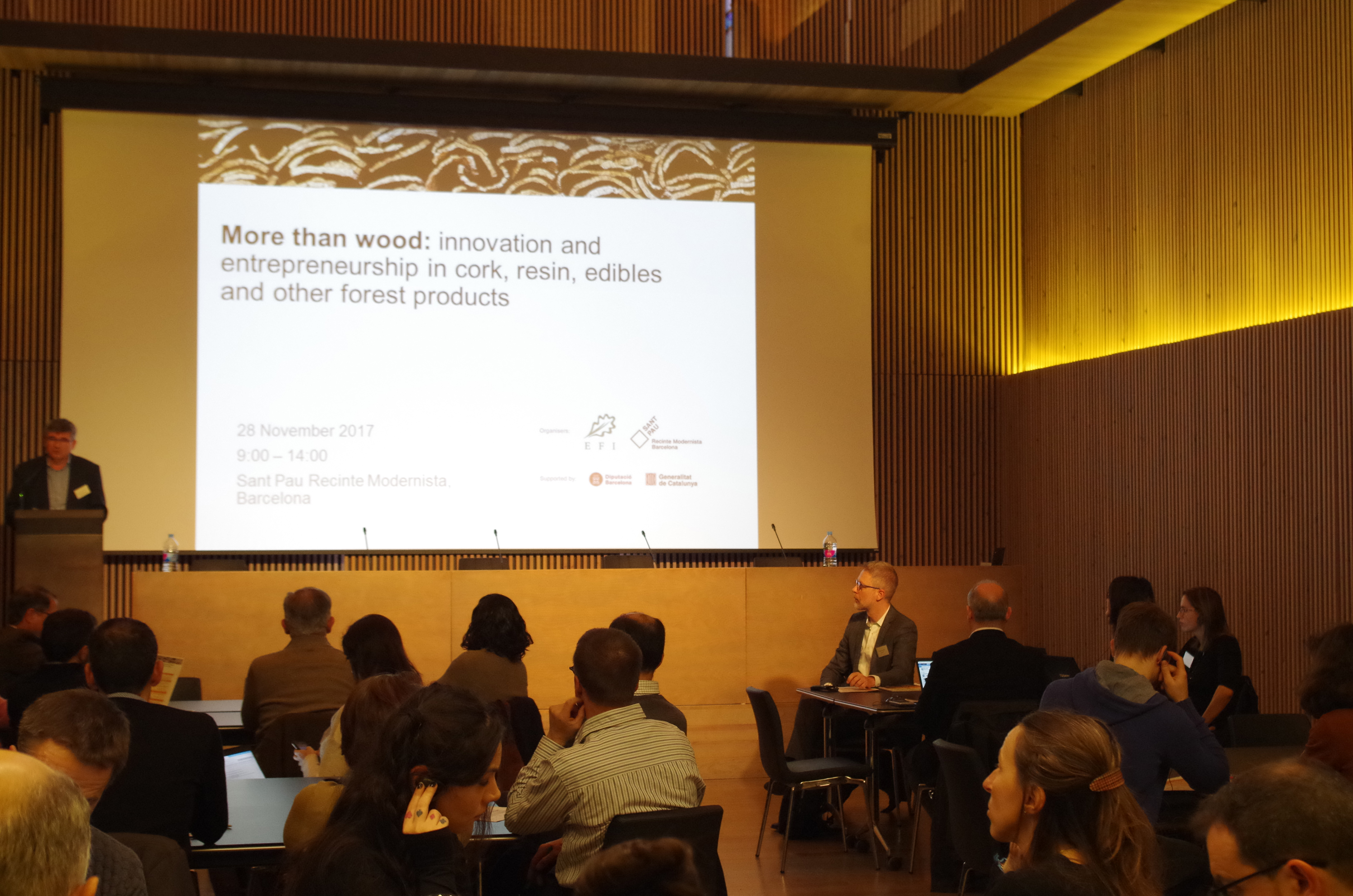 A demand-driven approach is needed for non-wood forest products (NWFPs) to become a credible contender in a circular bioeconomy. NWFPs are increasingly a viable and often more sustainable alternative to less planet friendly materials but profitability is a challenge and consumers must be informed, as well as value, such green alternatives and be willing to pay for them.
A demand-driven approach is needed for non-wood forest products (NWFPs) to become a credible contender in a circular bioeconomy. NWFPs are increasingly a viable and often more sustainable alternative to less planet friendly materials but profitability is a challenge and consumers must be informed, as well as value, such green alternatives and be willing to pay for them.Business people, researchers and government officials explored these issues in some depth during the second in the EFI Bioeconomy Dialogue series, held on 28th November at the Sant Pau Historic Site in Barcelona, Spain. The Dialogue, which focussed on innovation and entrepreneurship in NWFPs, was held in partnership with Sant Pau’s Sustainable Forest Hub, with representatives from the Generalitat de Catalonia and the Diputació de Barcelona in attendance. Also present were partners from the new EC-funded INCREdible project on Innovation Networks for NWFPs, with the event preceding the project Kick-Off Meeting.
Presentations from business, research and policy perspectives stimulated debate for participants to share expertise and experiences in a world café focussing on challenges and opportunities for NWFPs. Key messages found that collaboration and cooperation are required: actors must work together, not only within different NWFP sectors, but cross-sectorially. Viable value chains are needed, with associations and cooperatives for farmers and forest owners recommended. Traceability and bio-labelling were further elements relevant to all NWFP sectors, while regulation of harvesting of wild products remains a challenge. An emerging but hitherto under exploited avenue is the connection between NWFPs and eco-tourism, health and well-being.
More information
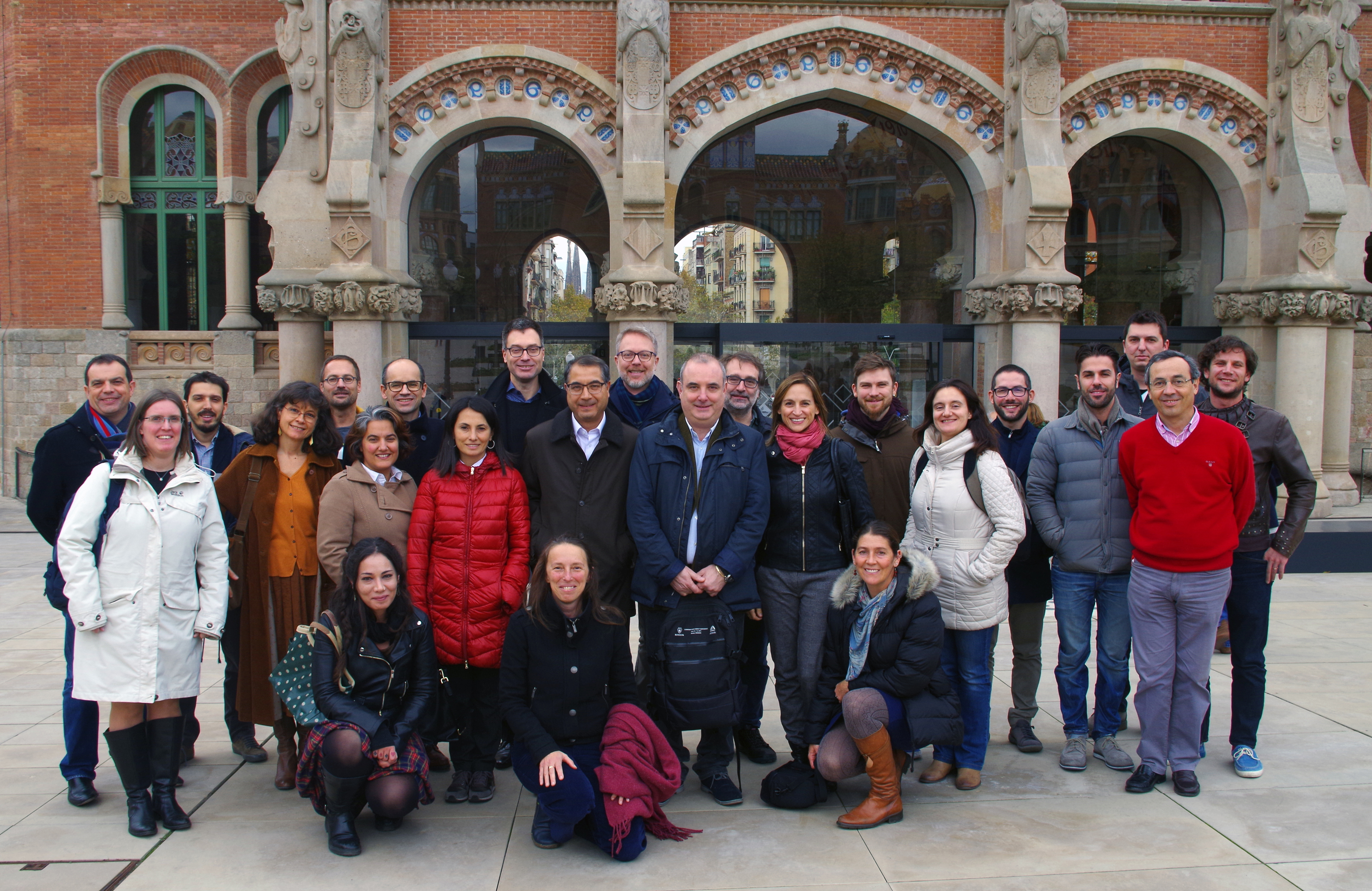 A new H2020 project will exchange knowledge on non-wood forest products (NWFPs) and collaborate on developing innovative business models and inclusive economic strategies for rural regions.
A new H2020 project will exchange knowledge on non-wood forest products (NWFPs) and collaborate on developing innovative business models and inclusive economic strategies for rural regions. Innovation Networks of Cork, Resin and Edibles in the Mediterranean basin (INCREdible) is a 3-year Coordination and Support Action, funded by the European Commission and coordinated by EFIMED. It will address the gap between existing research and innovation knowledge on service systems for Non-Wood Forest Products (NWFP) in the Mediterranean.
To achieve this, INCREdible will develop Innovation Networks (iNets) in five significant areas for Mediterranean NWFPs: cork; nuts and berries; resins; mushrooms and truffles; and aromatic and medicinal plants. Each iNet will gather and share best practices related to NWFP production, transformation and trade channels, from both practical and science-based perspectives. A Community of Practice will then bring together facilitators from each of the five iNets to exchange experiences and knowledge, for maximum cross-sectoral, inter-regional learning.
The project Consortium is made up of 12 project partners, alongside EFIMED, from eight countries: Belgium, Croatia, France, Greece, Italy, Portugal, Spain and Tunisia. The project Kick-Off meeting took place in Barcelona on 28 and 29 November.
INCREdible receives funding from the European Commission’s H2020 programme through the RUR-10-2016-2017 call, Thematic Networks compiling knowledge ready for practice. More information
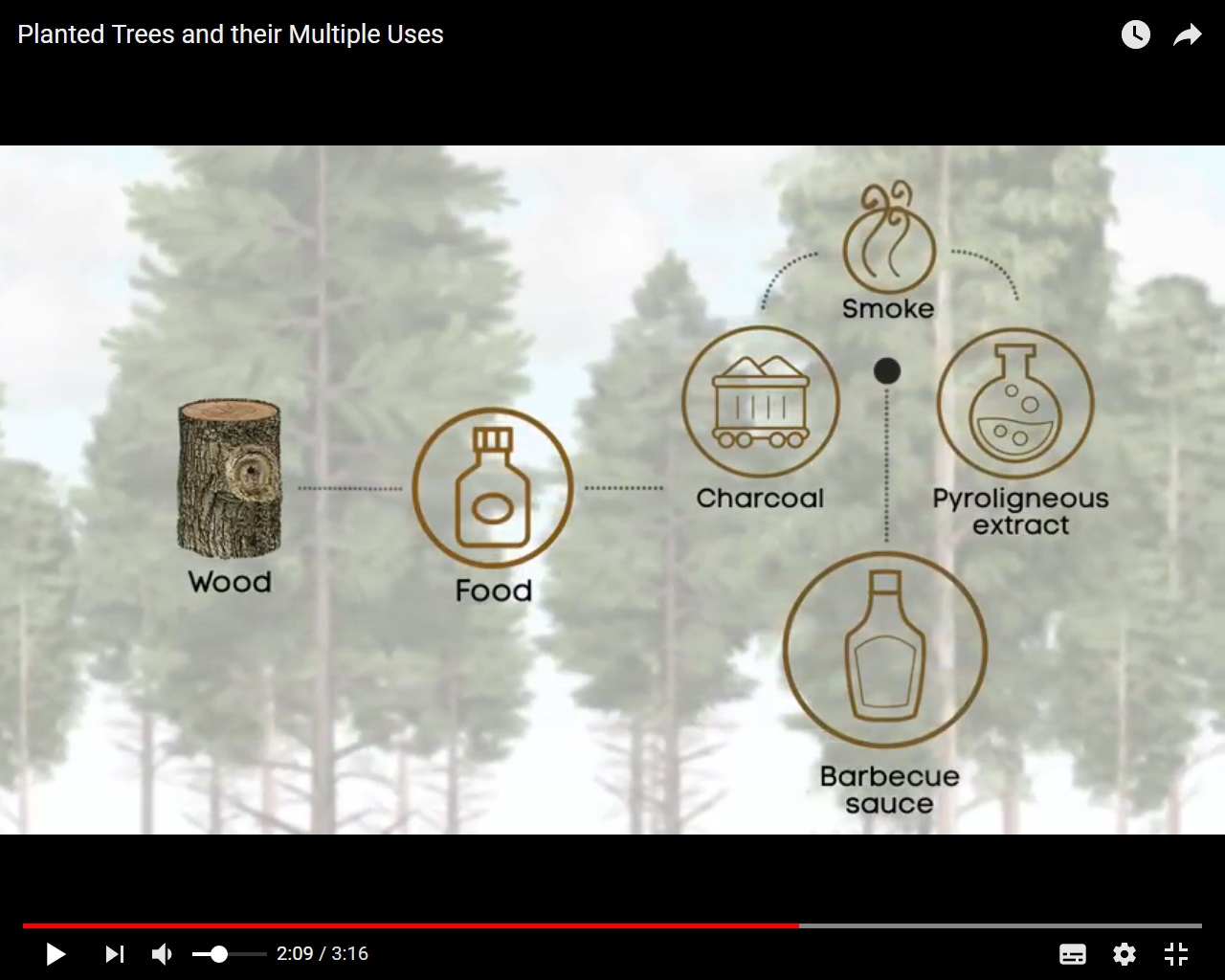 Companies in the Brazilian planted tree industry invest heavily in innovation and technology, and also create increasingly efficient processes with less environmental impact in order to contribute to a low-carbon economy. These investments are creating a whole universe of products.
Companies in the Brazilian planted tree industry invest heavily in innovation and technology, and also create increasingly efficient processes with less environmental impact in order to contribute to a low-carbon economy. These investments are creating a whole universe of products. To introduce the myriad uses of planted trees, Ibá has launched a new video entitled “Planted Trees and Their Multiple Uses." The video shows how flowers, fruit, branches, bark, wood, and resin are present within our homes and our everyday activities.
Forest-based products produced on a large scale range from the most curious ones like Barbecue sauce, ice cream, syrups, milk creams, juices, canine food, enamels, medicine capsules, natural repellents, disinfectants, soap, purification filters, clothes, fabrics, cosmetics and diapers to the more evident as pencils, papers, packaging, wood panels, laminate floors, books and notebooks; including fuels, solvents, adhesives, paints, preservatives, carbon fibers, energy, asphalt blankets, among others.
It also presents new products created using cutting-edge technology that will soon be available in our daily routines. To develop alternative solutions to the use of fossil and finite resources, the sector has been investing widely in innovation and technology, with research in products and development, such as biotechnology and nanotechnology.
The video is available at: https://www.youtube.com/watch?v=cOYzYSc3WP0
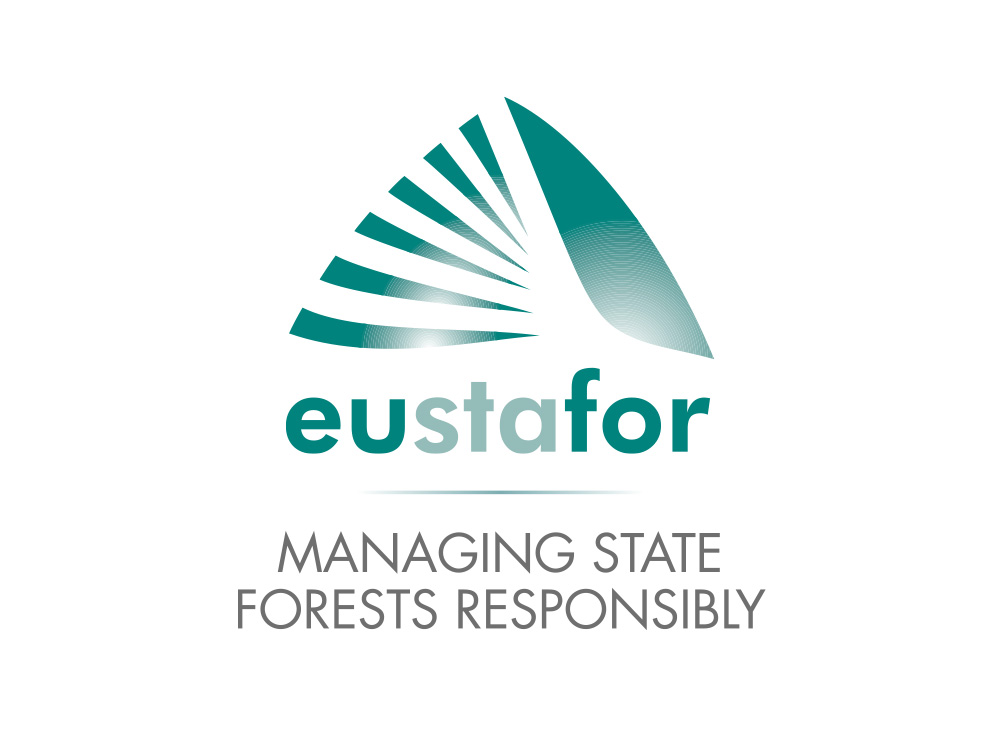 On 16 November 2017, the European Commission launched its review of the EU Bioeconomy Strategy, which reports on the role of the bioeconomy in research and innovation and within the context of EU policy.The renewed policy context provides a new momentum for updating the EU Bioeconomy Strategy and to recognize the full value of forestry’s contribution towards meeting global challenges as defined by the UN Sustainable Development Goals and which would give more coherence to the EU Policy framework.
On 16 November 2017, the European Commission launched its review of the EU Bioeconomy Strategy, which reports on the role of the bioeconomy in research and innovation and within the context of EU policy.The renewed policy context provides a new momentum for updating the EU Bioeconomy Strategy and to recognize the full value of forestry’s contribution towards meeting global challenges as defined by the UN Sustainable Development Goals and which would give more coherence to the EU Policy framework.Forests cover more than 40 percent of the EU’s land area and provide the bioeconomy with renewable materials in addition to many other important ecosystem services. Moreover, EUSTAFOR members – European State Forest Management Organizations – perceive themselves as catalyzers of the bioeconomic development in European countries and regions due to their scale, stability and commitment to sustainable forest management. Therefore, EUSTAFOR is contributing 8 policy messages geared towards achieving an ambitious update of the strategy. The messages are available at this link. More information on the same topic can be found in EUSTAFOR’s brochure: “State Forests Boost the Bioeconomy,” which is available at this link.
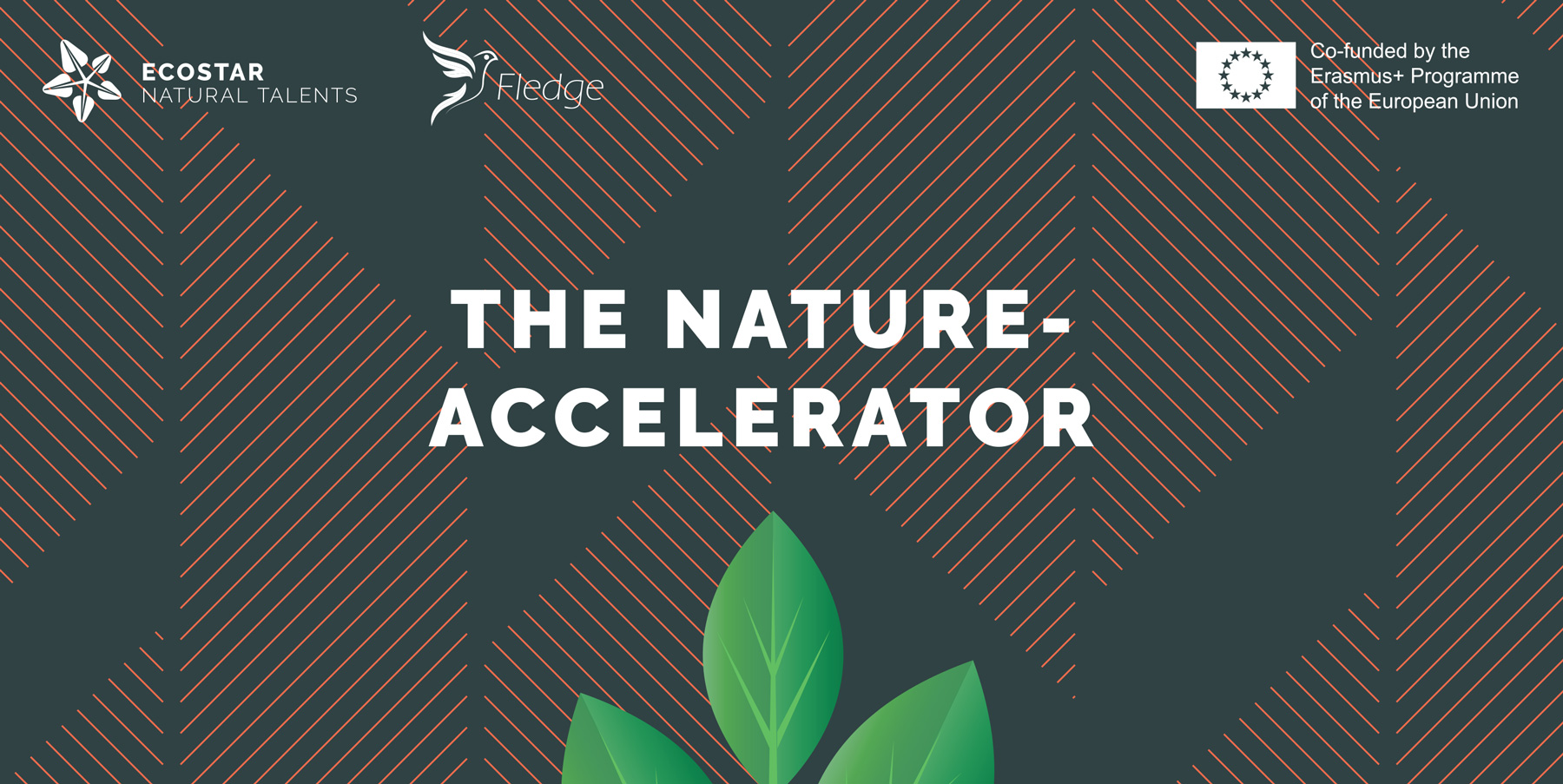 Got natural talent? Are you a nature-based startup and need to improve your business networks and skillset? ECOSTAR is looking for you!
Got natural talent? Are you a nature-based startup and need to improve your business networks and skillset? ECOSTAR is looking for you!Impact investment is the new business and social pivot and we are looking for startups that share our passion for bio economy & sustainability to join us for next summer’s Nature-Accelerator programme.
APPLY on http://www.ecostarhub.com/grow/ ,
the application will remain open until the 15th March 2018
WANT TO KNOW MORE?
The Nature-Accelerator, an ECOSTAR initiative powered by Fledge, selects and invests in early-stage impactful startups that are creating sustainable solutions to innovate the agriculture, forestry, natural resource and ecotourism sectors.
In 2018, selected teams will join 8 weeks acceleration programme (June – July 2018) of entrepreneurial, technical and scientific mentorship, guiding entrepreneurs along the complex path to improved revenues and financial sustainability. This programme is the first “nature-based” accelerator of its kind and is to be hosted at the University of Padova (Italy); one of the oldest universities in the world!
ONE MORE THING: Enjoy the festive season and happy New Year from all the ECOSTAR Team!
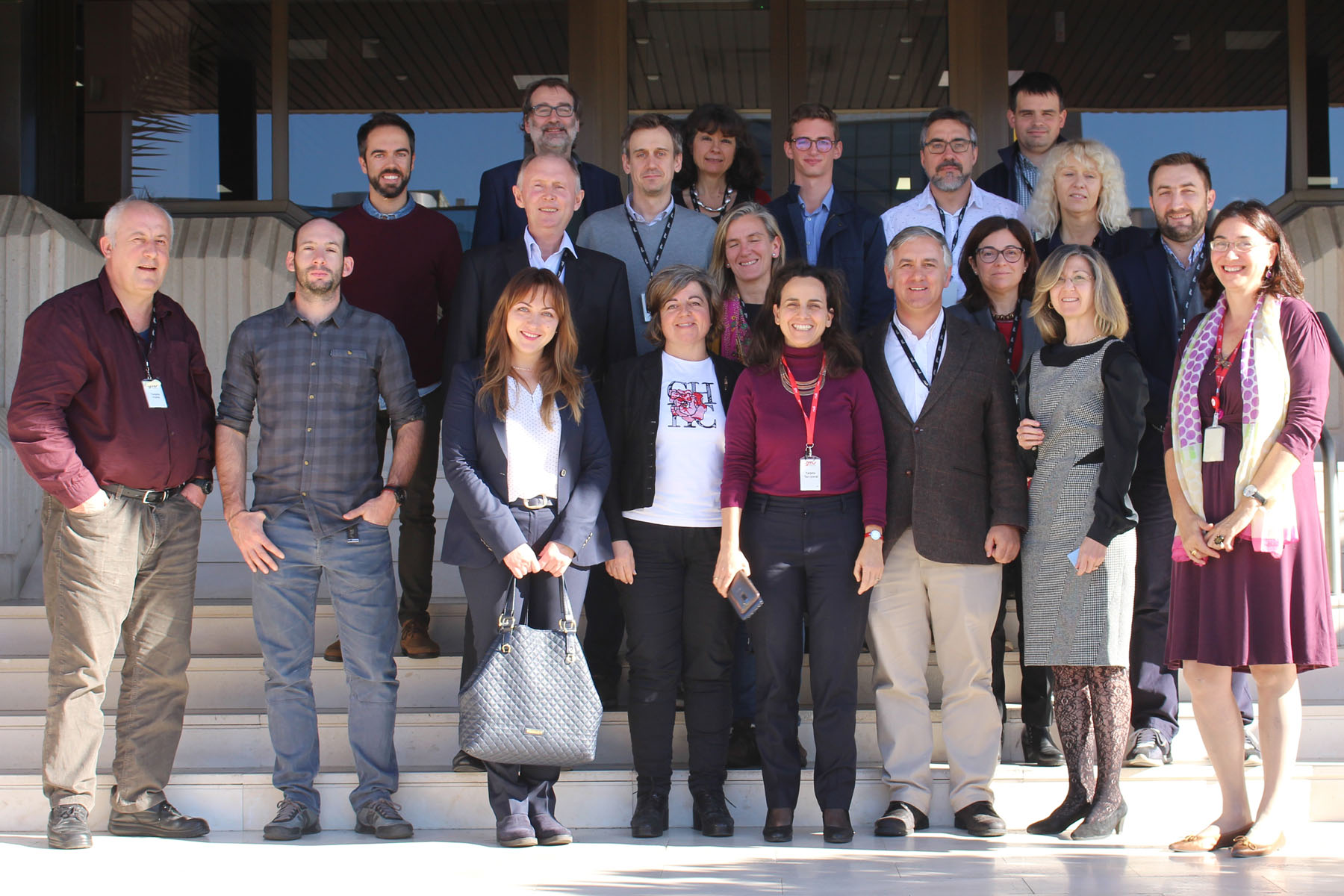 11 European organizations strike out on a promising sustainable-forestry project
11 European organizations strike out on a promising sustainable-forestry projectForests are the lungs of our planet. But their key environmental role is not their only boon; their economic and social knock-on effects are coming into their own too. Direct and indirect benefits are in fact equally important. Conserving our forests and, above all, ensuring a sustainable use of them is therefore a pressing need at worldwide level.
A political framework is essential here but even more important is bringing initiatives to fulfilment. November 21 2017 will go down as a watershed date in this endeavor. This day saw the official launch of one of Europe’s most ambitious sustainable- and efficient-forestry initiatives: MySustainableForest.
This is an innovation initiative that aims at phasing increased use of Earth Observation into the forestry sector to ensure a more sustainable use of our woodland.
Evaluating biomass, mapping timber quality, developing a climate-change strategy and pinpointing vulnerabilities are, among others, the applications to be developed during the course of this long-term, 36-month research project.
This initiative comes under the umbrella Horizon 2020 program, the European Union’s framework research and innovation funding program.
The project Consortium is made up of 11 project partners, alongside EFI, from 8 countries: Croatia, Czech Republic, Finland, France, Lithuania, Spain, Portugal and United Kingdom.
MySustainableForest receives funding from the European Commission’s H2020 programme through the H2020-EO-2017 call, Downstream applications. More information
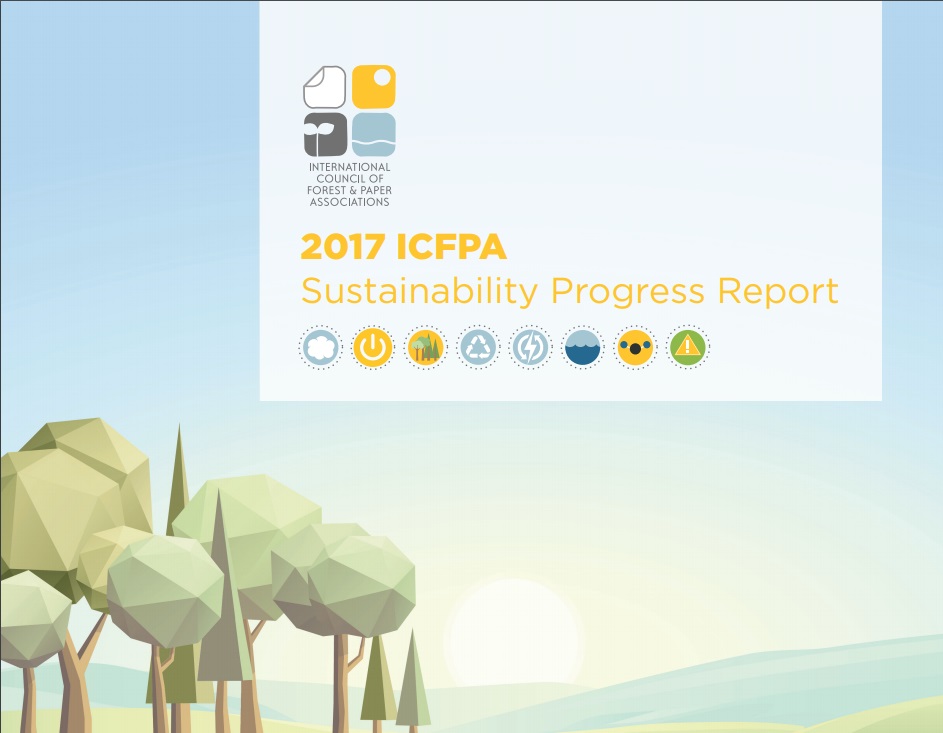 The International Council of Forest and Paper Associations (ICFPA) has just launched its 2017 Sustainability Progress Report. It is the sixth biennial report highlighting ICFPA members’ progress on the sustainability commitments agreed upon in the 2006 CEO Leadership Statement on Sustainability.
The International Council of Forest and Paper Associations (ICFPA) has just launched its 2017 Sustainability Progress Report. It is the sixth biennial report highlighting ICFPA members’ progress on the sustainability commitments agreed upon in the 2006 CEO Leadership Statement on Sustainability. The global sustainability performance of the forest product industry is improving from their respective baseline years. Since 2004/2005, ICFPA members reduced their greenhouse gas emissions intensity by 16%; the global paper recycling rate reached 58.9% in 2015, a 12.4% increase from 200; members reduced their SO2 emissions by 48% from 2004/2006; and reduced their use of process water by 7.2% since 2004/2005; the total sustainable forest management-certified area used to supply the global industry reached 54% in 2015, up from just 12% in 2000; and members’ recordable incident rate was improved by 24.5% since 2006/2007
“We are proud to announce our global industry’s continuous progress, which represents our commitment to social and environmental aspects associated with forest management and the manufacture of forest-based products,” said ICFPA President Jane Molony. “We look forward to continuing to supply the growing global demand for sustainable products, including fuel, fiber and forest products, while moving towards a greener economy.”
The full report is available at ICFPA website: http://www.icfpa.org/uploads/Modules/Publications/2017-icfpa-sustainability-report.pdf.
The ICFPA represents 19 pulp, paper, wood and fiber-based associations that encompass 36 countries, including many of the top pulp, paper and wood producers around the world.
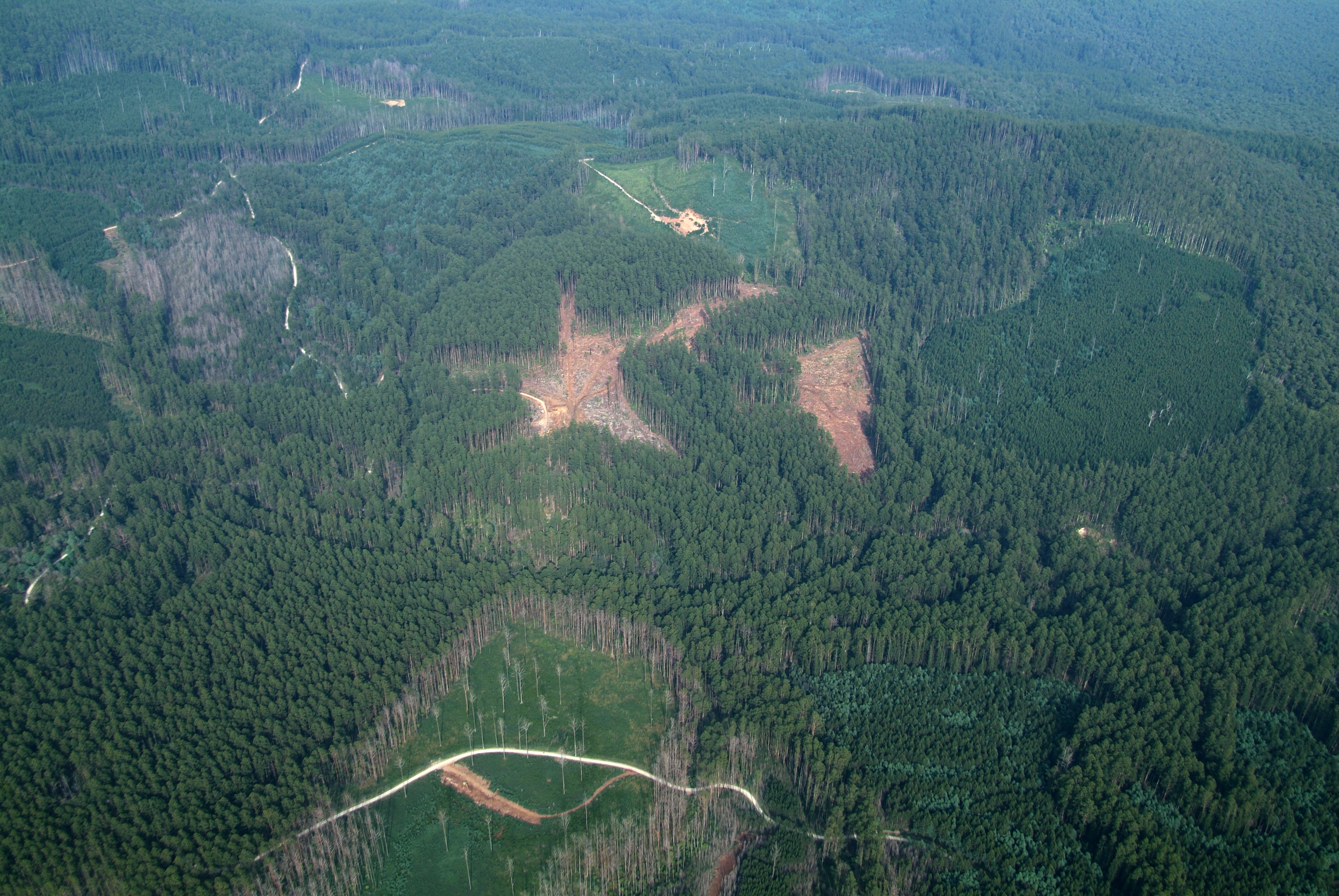 Heather Keith, Michael Vardon and David Lindenmayer, Fenner School of Environment and Society, Australian National University.
Heather Keith, Michael Vardon and David Lindenmayer, Fenner School of Environment and Society, Australian National University.Environmental economic accounting is an internationally-standardised system complementing the System of National Accounts, but with the scope expanded to include social, cultural and environmental benefits. Contributions of the environment to the economy are defined, with values quantified in physical and monetary metrics.
Ecosystem assets and services were quantified in the Central Highlands region of Victoria, Australia. Management of the forest is legislated under a Regional Forest Agreement, which is due for re-negotiation next year. Long-standing controversy occurs between the native timber industry wanting security of the timber resource, and the conservation, community and tourism organisations wanting environmental protection in an expanded national park. Ecosystem accounts provided information for decision-makers in government as well as the public and business community, making the trade-offs explicit, and so informing debate.
Native forest area managed for wood production was 35% of the region and contributed an economic value added of AUD$12 million. By comparison, the water industry supplying the city of Melbourne was AUD$310 million, tourism was AUD$260 million, and plantation forestry was AUD$30 million – produced from just 14% of the area used by native forestry. The forests are some of the most carbon-dense in the world, and storage of this carbon would be worth AUD$49 million if a carbon market existed in Australia.
Although a monetary value cannot be assigned to biodiversity, the trade-off can be defined as: Is the critically endangered Leadbeater’s Possum endemic to these native forests worth the loss of the AUD$12 million from ceasing native forest timber harvesting? In addition, the gain in increased water yield ($8m) and carbon storage ($13m) from a regrowing forest with no harvesting outweighs the loss from timber ($12m).
Ecosystem Accounts for the Central Highlands of Victoria. July 2017. Summary Report, Final Report, Appendices, Factsheet, Nature Ecology and Evolution
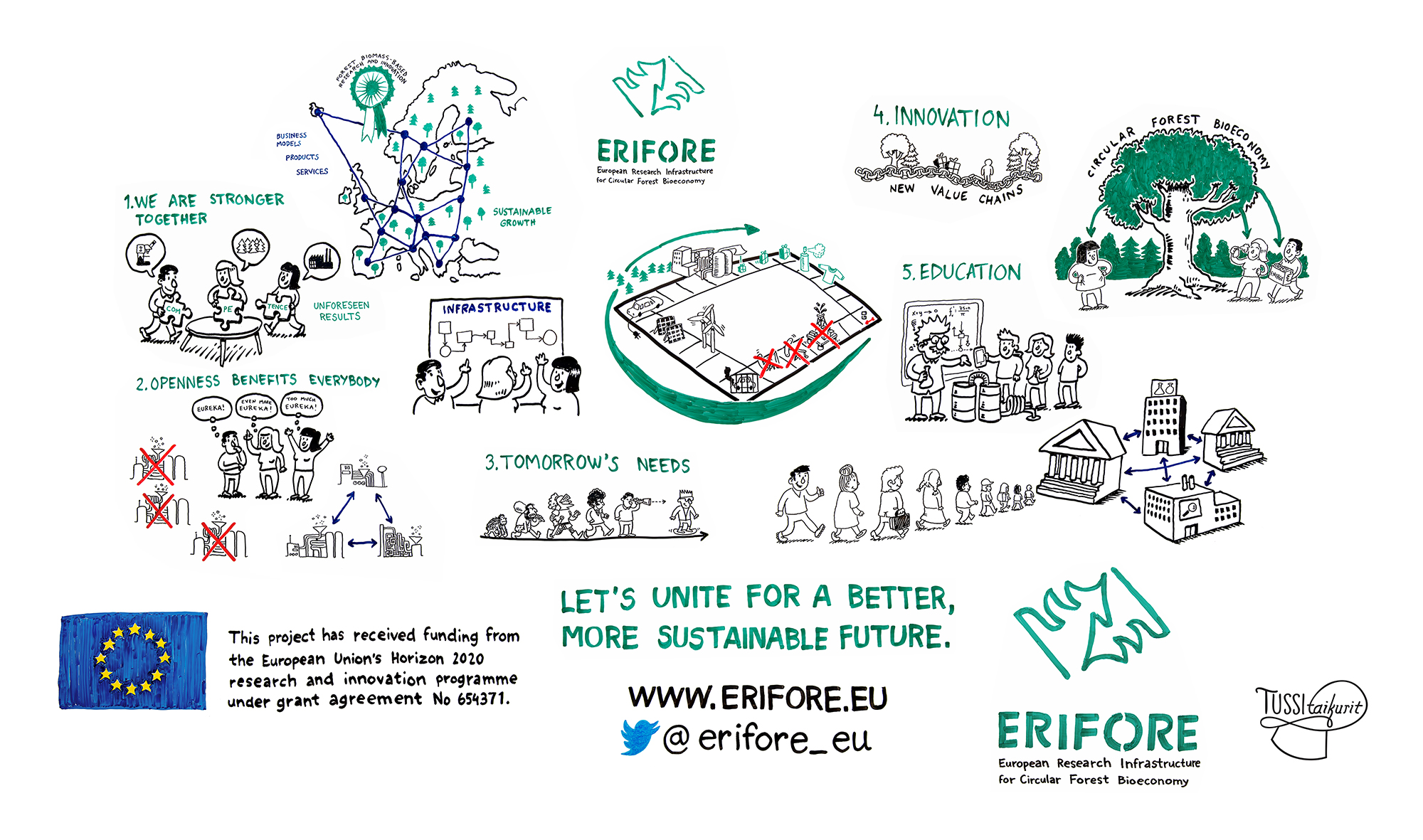 ERIFORE – European Research Infrastructure for Circular Forest Bioeconomy – has been an Infradev-1 project (GA No 654371, 2016-2017) under Horizon 2020 Framework programme. The mission is to establish an open access distributed research and innovation infrastructure for circular forest bioeconomy in Europe. ERIFORE focuses on the science and innovation bridge needed to develop and commercialise novel biorefinery process concepts for production of value added chemicals and materials from forest-based raw materials. The ERIFORE vision is to be a key contributor for European forest-based sector and to enable Europe to take the lead in the development and commercialisation of novel bio-based products.
ERIFORE – European Research Infrastructure for Circular Forest Bioeconomy – has been an Infradev-1 project (GA No 654371, 2016-2017) under Horizon 2020 Framework programme. The mission is to establish an open access distributed research and innovation infrastructure for circular forest bioeconomy in Europe. ERIFORE focuses on the science and innovation bridge needed to develop and commercialise novel biorefinery process concepts for production of value added chemicals and materials from forest-based raw materials. The ERIFORE vision is to be a key contributor for European forest-based sector and to enable Europe to take the lead in the development and commercialisation of novel bio-based products.Work continues after ERIFORE project to ensure commitment of key partners and host countries with the target to file an application for the next update of the European Strategy Forum on Research Infrastructures (ESFRI) roadmap. ERIFORE-ESFRI aims to form a well-functioning consortium combining groundbreaking science, applied research and piloting infrastructures. The envisaged distributed research infrastructure will be open for the scientific community, research organisations, small and medium sized enterprises, and industry. It will be committed to provide scientific excellence, new knowledge and up-to-date facilities with user services for the efficient execution of top-level research, ensuring access to interested researchers thus creating a substantial added value with respect to national facilities. It will also provide a strong platform for co-operative projects, high-level research services and networking activities to stimulate the interdisciplinary collaborations.
Please contact us if you are interested to join our efforts!
[email protected], http://erifore.eu/, https://www.youtube.com/watch?v=eMnTl0XV_F4
Enabling the full potential of sustainably managed forests and the use of wood in the LULUCF regulation would put the EU on track to meet the Paris Agreement. It sends a signal to Europe’s forest owners that they can continue taking care of their forests and invest into sustainable forest management – the best long-term strategy to maintain the carbon sink, enhance the bioeconomy and use of wood, create resilient forest ecosystems and ensure multiple benefits from our forests.
The LULUCF regulation has an indirect impact on forest owners. If the long-term climate benefits of forestry are not acknowledged and forestry is accounted as an emission despite forest harvesting being well below the growth, the willingness to invest into the forestry and forest-based sector would be hampered. This would in turn hamper well-functioning wood markets, which enables that forests can be taken care of.
It is crucial for the EU to keep promoting the use of domestic forest resources and the development of the entire forest-based value chain. This allows for the de-fossilization of society and the development of a sustainable EU bioeconomy, based on EU-grown renewable resources. Restricting the use of EU wood, inevitably would lead to increasing imports from outside the EU.
Forestry and use of wood-based products are uniquely placed to tackle climate change, as it is the main sector removing CO2 from the atmosphere and providing a renewable raw material to replace fossil-based products and energy. EU forests absorb the equivalent of nearly 10% of total EU greenhouse gas emissions each year.
The regulation on Land Use, Land Use Change and Forestry (LULUCF) will incorporate greenhouse gas emissions and removals related to forest and agricultural land into the EU 2030 Climate and Energy Framework.
To kick-off the review of the EU Forest Strategy, the European Parliament AGRI, ITRE and ENVI Committees organised a joint public hearing on 4 December 2017. CEPF Vice-President Philipp zu Guttenberg gave a speech at the public hearing, sharing the expectations and visions of Europe’s forest owners.
“Our forests are in the best sense multitasking and multitalented ecosystems: They are oxygen producers, water collectors and purifiers, soil stabilizers, home for a rich diversity of fauna and flora, landscape architect, recreational animator and education center for one of the most fascinating renewable resources: namely wood”, said Mr zu Guttenberg.
Following the public hearing, CEPF organised a joint event with EUSTAFOR, COPA-COGECA and EFI to continue the discussion on the review of the EU Forest Strategy. The event was hosted by MEP Miapetra Kumpula-Natri, MEP Ulrike Müller and MEP Andrzej Grzyb and was organized in cooperation with the European Parliament Intergroup on Climate Change, Biodiversity, and Sustainable Development. CEPF was represented in the panel discussion by Ms Natalie Hufnagl-Jovy from AGDW.
It was concluded from the event that while many policy developments in the EU have an increasing impact on forests and the forest-based sector, they do not sufficiently take into account the challenges and benefits of multifunctional sustainable forest management and the versatile and cross-sectoral potential of wood-based products. One key message that emerged from the discussions was that the EU Forest Strategy should be the reference for the development of EU forest-related policies.
Read more on event from the joint press release.
You can listen the European Parliament AGRI, ITRE and ENVI Committees joint hearing session from European Parliament’s broadcast.
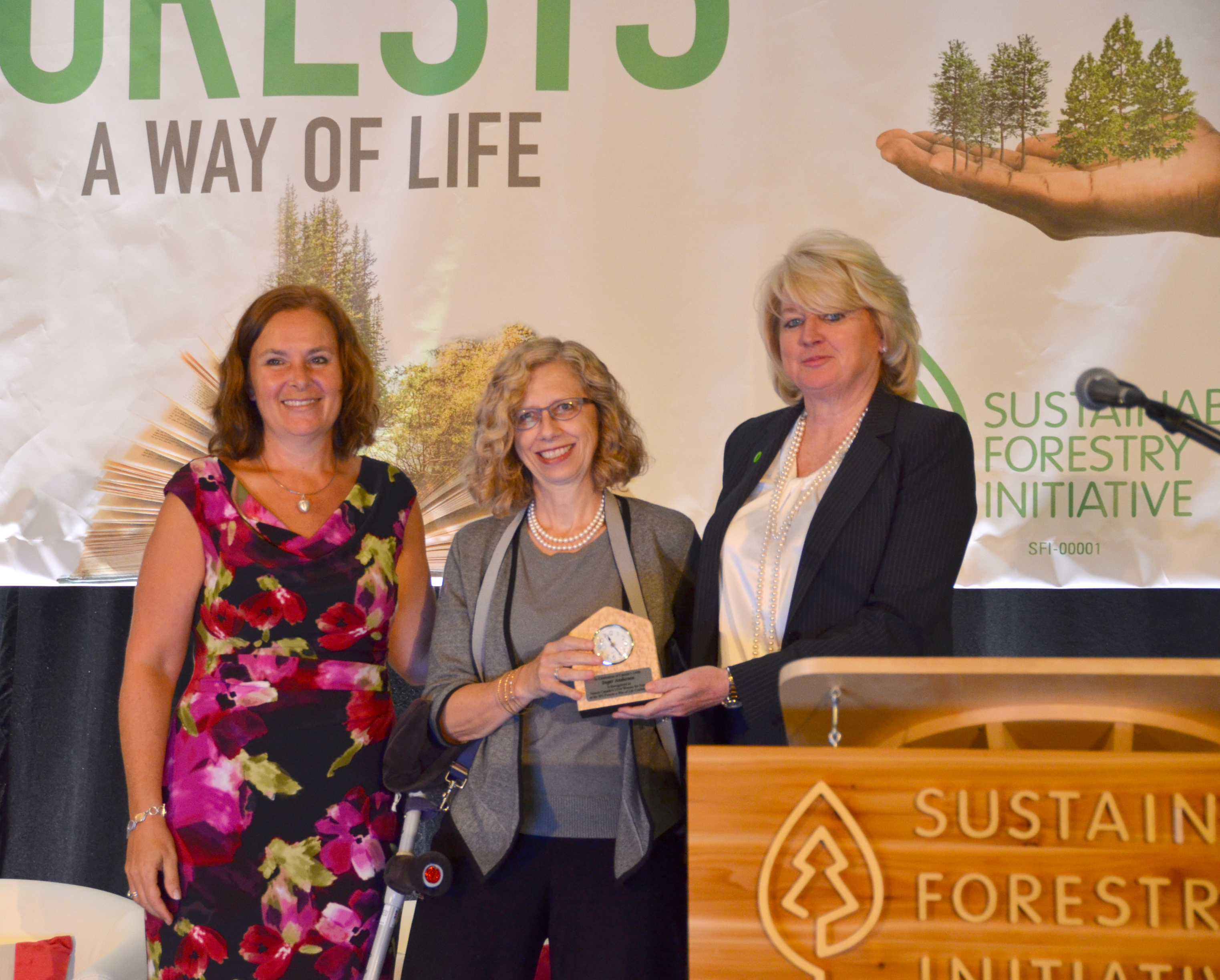 Kathy Abusow, President and CEO of SFI Inc., and a founding member of Women for Nature, recently wrote an op-ed in Ottawa’s The Hill Times. The op-ed covers how Nature Canada's Women for Nature initiative raises awareness of Canada's wealth of biodiversity and the importance of connecting youth to nature while being a symbol of diversity. Following Nature Canada's vision, Women for Nature brings together women of influence from a wide range of backgrounds who demonstrate their passion for nature and for driving change. Diversity is a crucial part of the concept.
Kathy Abusow, President and CEO of SFI Inc., and a founding member of Women for Nature, recently wrote an op-ed in Ottawa’s The Hill Times. The op-ed covers how Nature Canada's Women for Nature initiative raises awareness of Canada's wealth of biodiversity and the importance of connecting youth to nature while being a symbol of diversity. Following Nature Canada's vision, Women for Nature brings together women of influence from a wide range of backgrounds who demonstrate their passion for nature and for driving change. Diversity is a crucial part of the concept. At SFI's recent annual conference, Inger Andersen, Director General of the International Union for the Conservation of Nature, became the 151st Women for Nature, which gives this initiative global reach and connection. As a sustainability leader dedicated to the future of our forests, SFI focuses on well-managed forests, and how they clean our water, sequester carbon, and conserve biodiversity. SFI is also strongly focused on community engagement and, in particular, elevating environmental education for youth through Project Learning Tree. It's about diversity and about the strength that comes with it - diversity and strength not just for a community or an enterprise, but for all of nature.
The experts from Finland, Norway, Sweden and Russia, as well as representatives of the UNECE, the FAO and the International Barents Secretariat shared experience in reflecting climate-change in the forestry strategies. Consideration of the climate change and efficient forecasting of its consequences for northern forestry and timber sectors are expected to stay high on the BEAC agenda for the decades to go.
The priorities and initiatives for further Barents/ Euro-Arctic cooperation on forest sector were reflected in the Forest Forum Recommendations. The countries highlighted commitment to share experience and cooperate in research in boreal forest adaptation to climate change, and welcomed the updated Barents Action plan on climate change. The countries expressed the wish to clearer highlight the important role of northern forests on the global forest-related agenda.
The Forum finalized the two-year work on Barents forests under the Russian Chairmanship and welcomed Sweden as the new Chair.
For more information on the Forest Forum and the BFSN, please, visit http://www.barentscooperation.org/en/Working-Groups/BEAC-Working-Groups/Economic-Cooperation/Barents-Forest-Sector-Network-(BFSN)
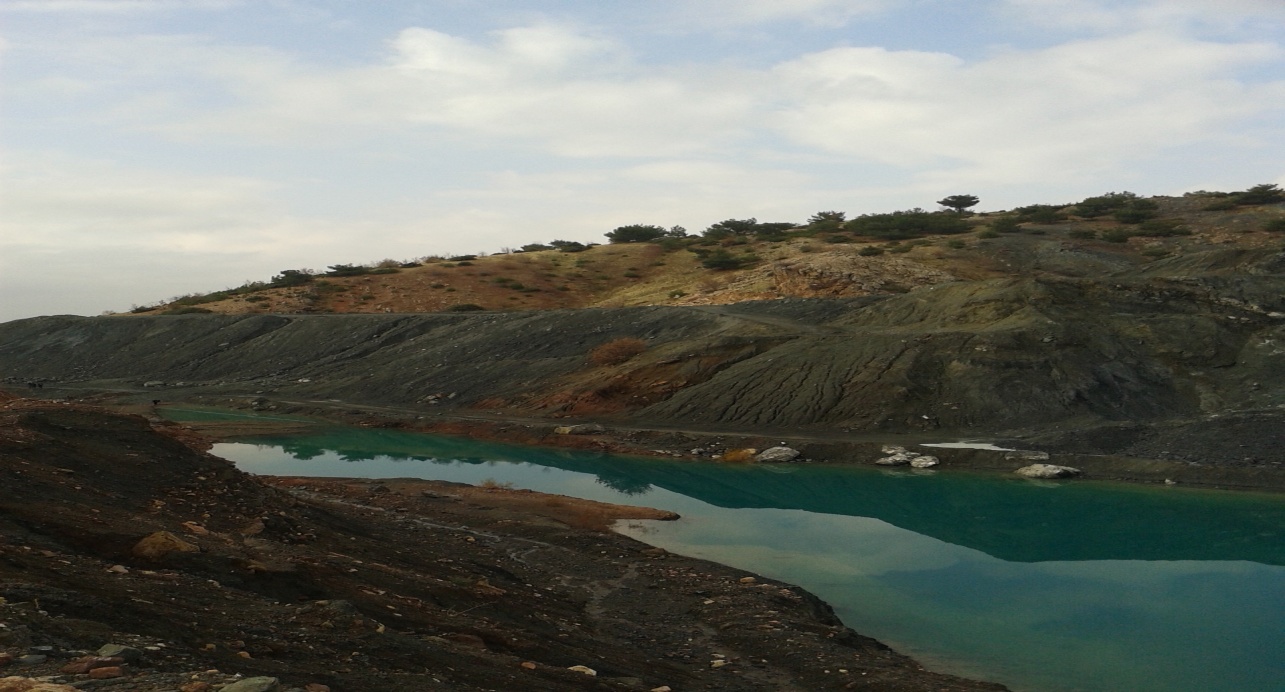 The forest crimes in the Directorate of Adıyaman Forest Enterprise, between 2010-2014, were analyzed considering illegal grazing, smuggling, illegal cuttings, occupation and illegal utilization. Some statistical information about illegal grazing, illegal cuttings, forest fire, smuggling, occupying and illegal utilization within the Directorate of Adıyaman Forest Enterprise and connected chieftaincies were investigated and the reasons of these crimes were studied as well as solutions suggested on how to overcome these problems. In addition, some important quantitative information has been assessed by making legal definitions about the penalties given according to the Forest Law No: 6831, which has been in effect since 1956, and the public's view of the forests. Graphical representation of forest crimes committed in many subjects such as opening, smuggling, transporting of forest materials, forest fire, grazing were shared. Some analysis and evaluations were made on the adequacy or deterrence of penalties imposed on forest crimes with related to crime and punishment specified in the Forest Law.
The forest crimes in the Directorate of Adıyaman Forest Enterprise, between 2010-2014, were analyzed considering illegal grazing, smuggling, illegal cuttings, occupation and illegal utilization. Some statistical information about illegal grazing, illegal cuttings, forest fire, smuggling, occupying and illegal utilization within the Directorate of Adıyaman Forest Enterprise and connected chieftaincies were investigated and the reasons of these crimes were studied as well as solutions suggested on how to overcome these problems. In addition, some important quantitative information has been assessed by making legal definitions about the penalties given according to the Forest Law No: 6831, which has been in effect since 1956, and the public's view of the forests. Graphical representation of forest crimes committed in many subjects such as opening, smuggling, transporting of forest materials, forest fire, grazing were shared. Some analysis and evaluations were made on the adequacy or deterrence of penalties imposed on forest crimes with related to crime and punishment specified in the Forest Law.Besides it has been observed that there were some economical reasons such as rural poverty and inadequate income situations of forest villagers that caused these forest crimes in order to avoid from economic problems. To reduce forest crimes, it is necessary that rural people living in forest villages must be employed by vocational education associated with their qualification by creating subsistence resources and bringing support and production encouragement mechanism. MEHMET ALPER BORAZAN,
www.dergipark.gov.tr/turkjforsci.
Publications
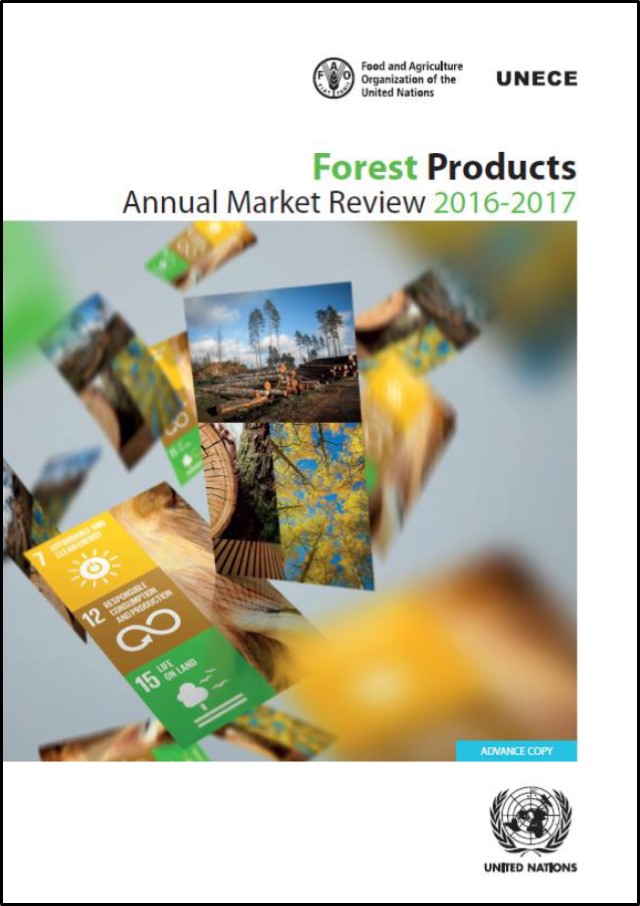 The consumption of forest products continues to increase across the UNECE region, driven by the use of wood as a “greener choice” in building and energy use, and supported by favourable economic growth. However, trade restrictions are a growing challenge for the sector.
The consumption of forest products continues to increase across the UNECE region, driven by the use of wood as a “greener choice” in building and energy use, and supported by favourable economic growth. However, trade restrictions are a growing challenge for the sector.Wood products
The UNECE recorded a continued increase in forest product consumption in 2016. This rise was led by sawnwood (+4.0), with the other two major primary product categories, panels, and pulp and paper also rising by 2.5% and 0.9% respectively. Market trends for 2017 point to continued growth across the region’s economies, particularly in Europe, where growth is accelerating.
Trade developments
The UNECE region accounts for 60% of world trade in forest products although its share of export markets has been decreasing over the last decade. One of the major barriers to growth is the increasing level of restrictions on trade. As a recent example, a number of traditional log suppliers have imposed export restrictions designed to develop their domestic industry.
Wood products are subject to substantially more non-tariff measures than other manufactured products, which can have significant effects on their international trade. Examples include non-tariff measures intended to prevent insect infections, to assure the legal sourcing of timber, and to protect domestic producers. Such measures tend to increase costs for exporting countries in favour of domestic producers.
Certification
The two major certification schemes – the Forest Stewardship Council (FSC) and the Programme for the Endorsement of Forest Certification (PEFC) – reported a combined global total of 497 million hectares of certified forest in May 2017, a year-on-year increase of 35 million hectares (7.5%). Nearly 69 million hectares are now certified under more than one scheme.
To read more please see
Forest Products Annual Market Review, 2016-2017: http://www.unece.org/forests/fpamr2017
Press Release for Annual Market Review: http://www.unece.org/?id=47053
 The European forests and forest sector are already making an important contribution to combating climate change at present. Not only through sequestering CO2 in the forest ecosystem, but active management also produces wood products that replace energy-intensive materials such as concrete and steel. Furthermore, discarded wood and wood of low quality is used to generate energy. This avoids the use of coal, oil and gas. Together, the EU forest and wood use already compensate 12% of the total EU greenhouse gas emissions at present.
The European forests and forest sector are already making an important contribution to combating climate change at present. Not only through sequestering CO2 in the forest ecosystem, but active management also produces wood products that replace energy-intensive materials such as concrete and steel. Furthermore, discarded wood and wood of low quality is used to generate energy. This avoids the use of coal, oil and gas. Together, the EU forest and wood use already compensate 12% of the total EU greenhouse gas emissions at present.In a new study that was released yesterday in the Journal 'Forests' it was shown that this contribution can become even greater around 2050. The authors state that through Climate Smart Forestry (CSF) the total contribution can reach more than 20% of the total EU greenhouse gas emissions.
Gert-Jan Nabuurs: 'We assume that countries take the climate problem serious, and that they want to take action in all sectors including the forests and forest sector'. Climate-smart forest management looks very closely at the local conditions and takes appropriate measures and also in a wide variety. E.g. in some regions in Europe we see forest mortality occurring in Norway spruce in central Europe. In those regions you rejuvenate the forest with new climate adapted species. In other places CSF may be aimed at reducing the fire risk, or in other regions it aims at improving forest production and stimulating the use of wood in construction. In again other places forest management can be focused on biodiversity and set up strict reservations. We have calculated all these measures. Then you get a total contribution of more than 20% compensation for the entire EU greenhouse gas emissions.
What we point out further is that climate policy devotes far too little attention to this. The current regulation gives far too few incentives to implement all these measures.
Climate-smart forest management seeks synergy with eg raw material supply, biodiversity protection, building with wood, prevention of forest mortality, etc. But it requires incentives and stimulation and then forest owners, forest industry, local governments and NGOs can get started.
G.J. Nabuurs, Ph. Delacote, D Ellison, M. Hanewinkel, L. Hetemäki, M. Lindner, M. Ollikainen. 2017. By 2050 the mitigation effect of EU forests could nearly double through climate smart forestry. Forests 2017, 8, doi:10.3390/f8120484 PDF Version: http://www.mdpi.com/1999-4907/8/12/484/pdf
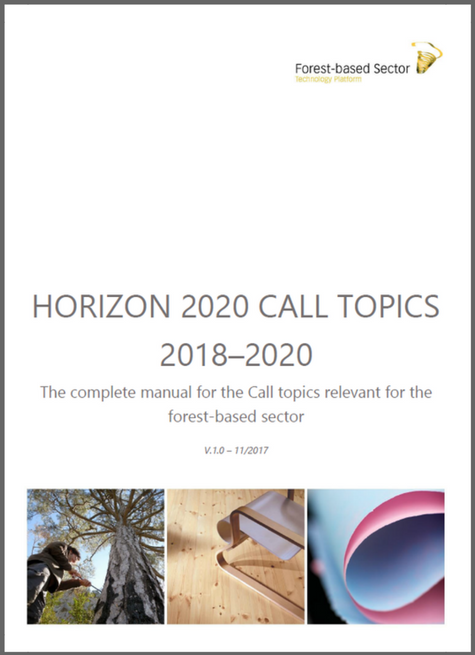 The European Commission recently released the Horizon 2020 work programme for 2018–2020. For the three forthcoming years, Horizon 2020, the EU’s largest research and innovation programme ever, will focus on climate, clean energy, the circular economy and digitizing European industry, by offering EUR 30 billion to successful applicants.
The European Commission recently released the Horizon 2020 work programme for 2018–2020. For the three forthcoming years, Horizon 2020, the EU’s largest research and innovation programme ever, will focus on climate, clean energy, the circular economy and digitizing European industry, by offering EUR 30 billion to successful applicants.The Forest-based Technology Platform (FTP) has identified around 50 Call topics for the forest-based sector, totalling over EUR 1.5 billion. These Call topics have been collected together to produce a manual that will guide stakeholders towards the most relevant funding opportunities in the new work programme. The FTP manual for the Call topics relevant for the forest-based sector is now ready to download. Additional information is provided for each Call topic, such as the relevance of the Call and which specific sub-sector (forestry, woodworking or pulp and paper) it addresses, as well as the corresponding research and innovation area of FTP’s Strategic Research and Innovation Agenda (SRA) for 2020.
The Horizon 2020 Call topics relevant to the forest-based sector will also be available on the FTP Database.
Links:
Read more: http://www.forestplatform.org/#!/articles/ftp-publishes-a-guide-to-coming-h2020-call-topics-d9256fcb-43ab-4afe-9410-a93958db90d4
FTP Database:http://db.forestplatform.org/
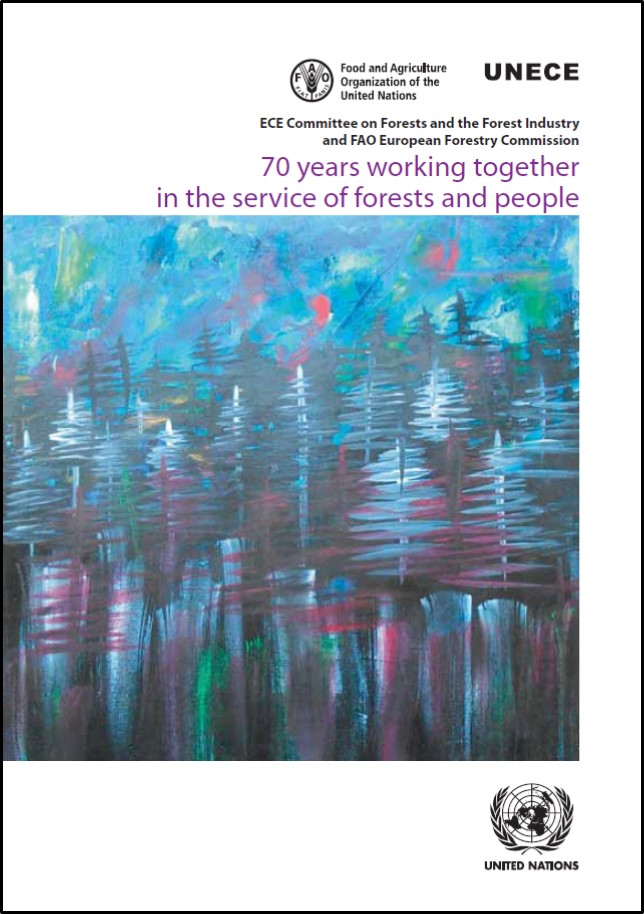 The ECE Timber Committee and the FAO European Forestry Commission emerged from the International Timber Conference held in 1947 as the key elements of the United Nations tasked with working on matters related to the forest sector in Europe. During their first 70 years of joint activity, the Committee and the Commission have contributed to post war reconstruction, to the expansion of the forest sector, to meeting the major challenges of the sector and to promoting and monitoring sustainable forest management. This paper chronicles the history of the Committee and the Commission’s work, in the context of the 2017 celebrations of the 70th anniversary of ECE and to mark the 70th anniversary of the fruitful cooperation of ECE and FAO on forests in the region. Read more.
The ECE Timber Committee and the FAO European Forestry Commission emerged from the International Timber Conference held in 1947 as the key elements of the United Nations tasked with working on matters related to the forest sector in Europe. During their first 70 years of joint activity, the Committee and the Commission have contributed to post war reconstruction, to the expansion of the forest sector, to meeting the major challenges of the sector and to promoting and monitoring sustainable forest management. This paper chronicles the history of the Committee and the Commission’s work, in the context of the 2017 celebrations of the 70th anniversary of ECE and to mark the 70th anniversary of the fruitful cooperation of ECE and FAO on forests in the region. Read more.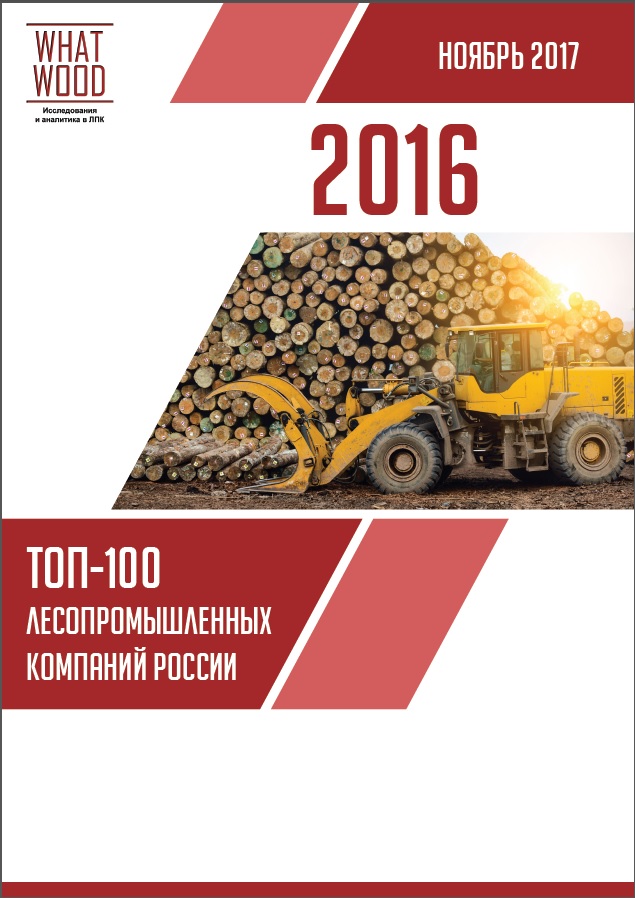 100 largest companies of Russian timber industry complex have provided 56% of the revenues of the entire forest sector in 2016 — such conclusions are presented in annual “Top-100 of the Russian Timber Industry Complex” rating published by WhatWood.
100 largest companies of Russian timber industry complex have provided 56% of the revenues of the entire forest sector in 2016 — such conclusions are presented in annual “Top-100 of the Russian Timber Industry Complex” rating published by WhatWood.Revenues of the 100 largest Russian timber industry companies increased by 13.2% to 918.6 billion rubles in the year. The other participants of the Russian timber industry complex are medium and small business with annual revenue volumes of up to 1.6 billion rubles.
The economy of Russia was declining for two consecutive years: –3.7% (YoY) in 2015 and –0.2% (YoY) in 2016. After the deep shock experienced by Russian business and the entire economy in 2014-2015, the year 2016 again brought challenges to Russian timber producers.
USD/RUB exchange rate reached a historic peak of 82 rubles/USD in January 2016. However, ruble have been strengthening for the whole year, reaching the average level of 63 rubles/USD by the end of the year and continued to decline in 2017. This scenario was unpredictable and unexpected for timber producers, which relied on higher export revenues when planning budgets for 2016. Read more.
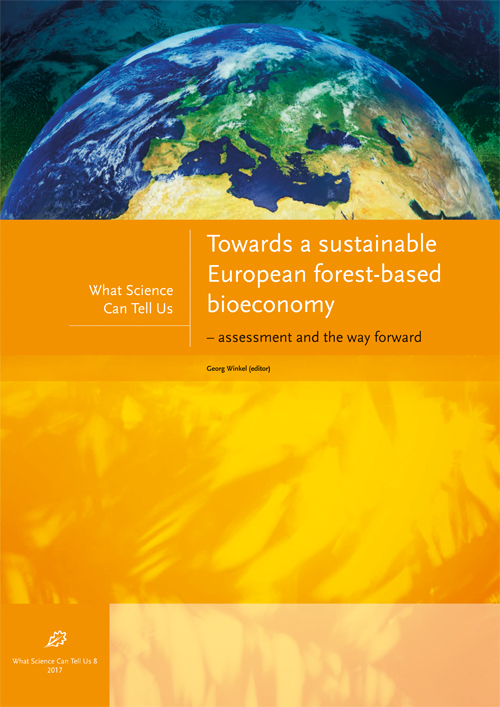 Georg Winkel (editor), European Forest Institute, 2017
Georg Winkel (editor), European Forest Institute, 2017 The bioeconomy has mobilised significant investments in technology, research and innovation. New and innovative bio-products and related services have emerged, and related niche markets show dynamic growth. The future of the bioeconomy, however, raises questions relating to its development potential, but also its sustainability.
This What Science Can Tell Us study assesses the scientific evidence and provides a synthesis of existing knowledge for policymakers on the importance of forests and the forest-based sector in contributing to the future European bioeconomy. It assesses the economic, social and environmental sustainability of a forest-based bioeconomy, and looks at issues that may affect its development.
Download the study: http://www.efi.int/files/attachments/publications/wsctu_8_2017.pdf
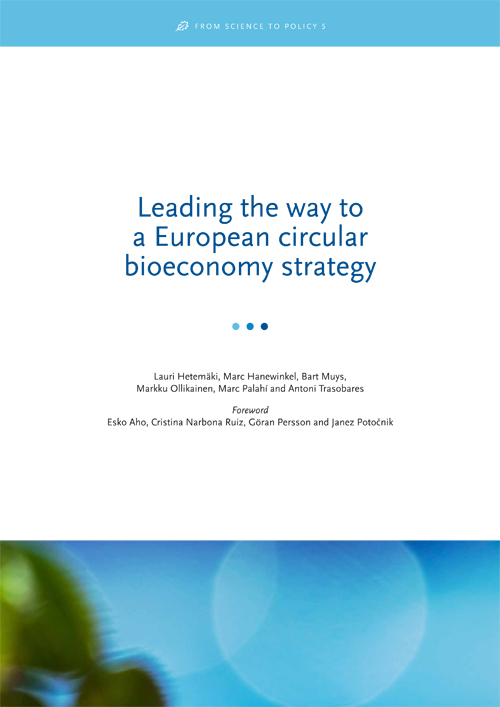 Lauri Hetemäki, Marc Hanewinkel, Bart Muys, Markku Ollikainen, Marc Palahí and Antoni Trasobares, European Forest Institute, 2017
Lauri Hetemäki, Marc Hanewinkel, Bart Muys, Markku Ollikainen, Marc Palahí and Antoni Trasobares, European Forest Institute, 2017The year 2016 was a turning point: the 2030 Agenda for Sustainable Development and its Sustainable Development Goals (SDGs) were adopted, and the Paris Agreement on climate change came into effect. These sent out a global political message of the need to transform our economic system to end poverty, protect the planet, and ensure wellbeing for all.
The critical question now is how to reach the ambitious targets they set. A necessary part of the answer will be the move to a circular bioeconomy to increase the use of renewable non-fossil raw materials and products in sustainable, resource-efficient way. The new From Science to Policy study from the European Forest Institute analyses what a circular bioeconomy strategy would require, particularly in a European context.
Download the study: http://www.efi.int/files/attachments/publications/efi_fstp_5_2017.pdf
Events
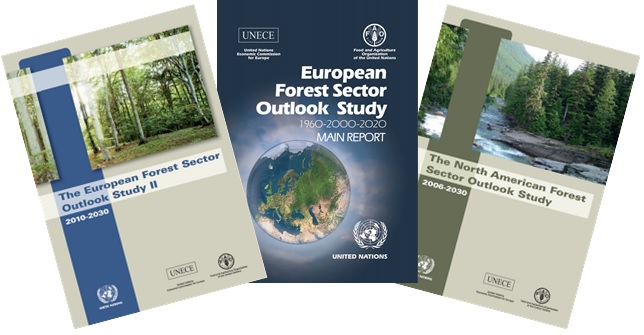 On January 23-24, 2018, a Brainstorming Workshop for the next ECE/FAO Forest Sector Outlook Study will take place in Geneva, Switzerland. The objective is to discuss which policy questions and topics should lead the work of the next round of outlook studies. In addition, the workshop aims to provide clarity regarding time horizon, geographic coverage, scenarios and modelling, outreach and the way forward. Participants will include policy makers, experts from the Team of Specialists on Forest Sector Outlook, other experts, relevant international and non-governmental organizations, and representatives of the private sector. More information on the workshop including the registration link can be found here: https://www.unece.org/forests/outlookjan2018. If you should be interested in participating or have any questions regarding the event, please contact Birgit Lia Altmann ([email protected]).
On January 23-24, 2018, a Brainstorming Workshop for the next ECE/FAO Forest Sector Outlook Study will take place in Geneva, Switzerland. The objective is to discuss which policy questions and topics should lead the work of the next round of outlook studies. In addition, the workshop aims to provide clarity regarding time horizon, geographic coverage, scenarios and modelling, outreach and the way forward. Participants will include policy makers, experts from the Team of Specialists on Forest Sector Outlook, other experts, relevant international and non-governmental organizations, and representatives of the private sector. More information on the workshop including the registration link can be found here: https://www.unece.org/forests/outlookjan2018. If you should be interested in participating or have any questions regarding the event, please contact Birgit Lia Altmann ([email protected]). Led by the Ministry of Agriculture of the Republic of Kazakhstan, in cooperation with UNECE/FAO and IUCN, the two-day meeting will be instrumental in furthering regional efforts on forest landscape restoration. This conference also bears the first opportunity to align national and regional efforts in the Caucasus and Central Asia with the international Bonn Challenge – a global effort to bring 350 million ha degraded and deforested land into restoration by 2030.
Read more.
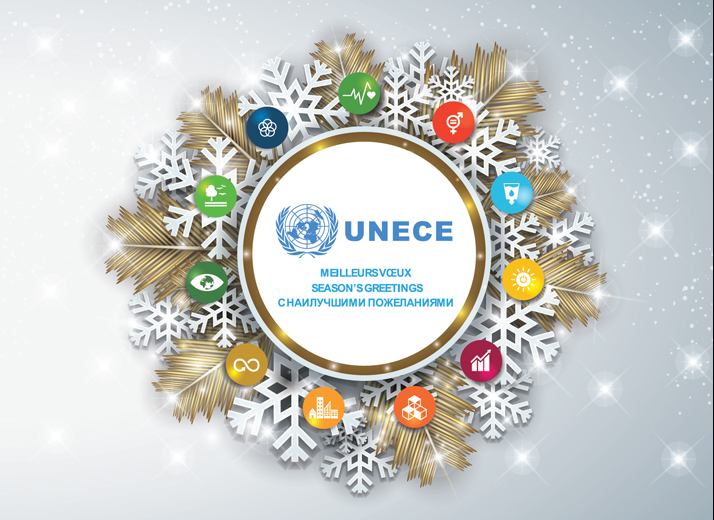
How to contribute? Deadline to provide contributions to the next issue is 15 March 2018. Please note that the content of the billboard does not necessarily reflect the views of the United Nations. Contributions are published as received and editing is the responsibility of the contributor. More information and the previous issues are available here.
We work in Collaboration with the Global Forest Information Service.

